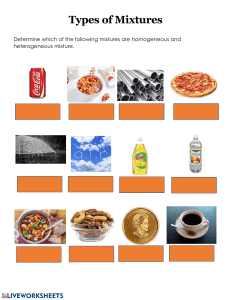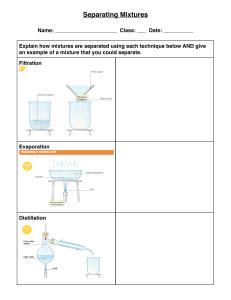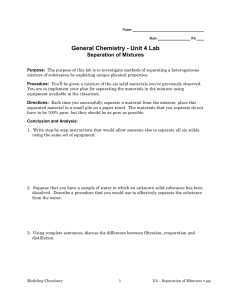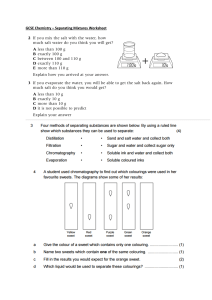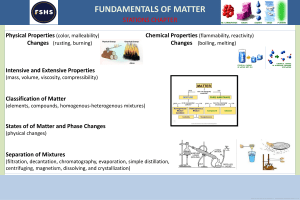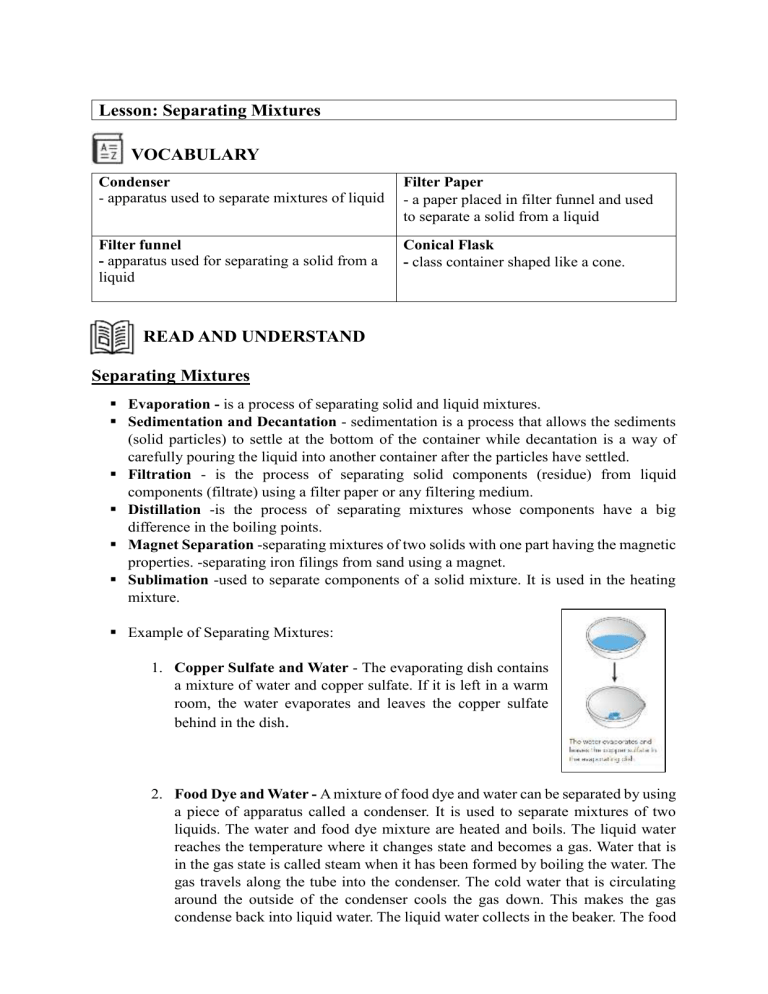
Lesson: Separating Mixtures VOCABULARY Condenser - apparatus used to separate mixtures of liquid Filter Paper - a paper placed in filter funnel and used to separate a solid from a liquid Filter funnel - apparatus used for separating a solid from a liquid Conical Flask - class container shaped like a cone. READ AND UNDERSTAND Separating Mixtures Evaporation - is a process of separating solid and liquid mixtures. Sedimentation and Decantation - sedimentation is a process that allows the sediments (solid particles) to settle at the bottom of the container while decantation is a way of carefully pouring the liquid into another container after the particles have settled. Filtration - is the process of separating solid components (residue) from liquid components (filtrate) using a filter paper or any filtering medium. Distillation -is the process of separating mixtures whose components have a big difference in the boiling points. Magnet Separation -separating mixtures of two solids with one part having the magnetic properties. -separating iron filings from sand using a magnet. Sublimation -used to separate components of a solid mixture. It is used in the heating mixture. Example of Separating Mixtures: 1. Copper Sulfate and Water - The evaporating dish contains a mixture of water and copper sulfate. If it is left in a warm room, the water evaporates and leaves the copper sulfate behind in the dish. 2. Food Dye and Water - A mixture of food dye and water can be separated by using a piece of apparatus called a condenser. It is used to separate mixtures of two liquids. The water and food dye mixture are heated and boils. The liquid water reaches the temperature where it changes state and becomes a gas. Water that is in the gas state is called steam when it has been formed by boiling the water. The gas travels along the tube into the condenser. The cold water that is circulating around the outside of the condenser cools the gas down. This makes the gas condense back into liquid water. The liquid water collects in the beaker. The food dye remains in the heated container. The food dye and water have different properties that allow you to separate them – they have different boiling points. QUICK CHECK! Answer the following questions. 1. What is filtration? _____________________________________________________________________ 2. What do you think you should do to separate small rocks and water? _____________________________________________________________________ _____________________________________________________________________ 3. Can you separate salt and water without using any apparatus? Explain your answer. _____________________________________________________________________ _____________________________________________________________________
